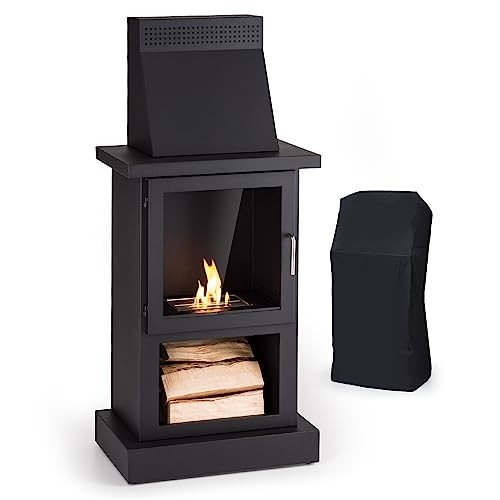
Cheap Fireplace Uk
従概要
-
設立日 5 de 3月 de 1912
-
分野 Saúde e Bem-estar
会社概要
The Comprehensive Guide to Fireplaces in the UK
Fireplaces have long been a staple of British homes, offering warmth, ambiance, and a unique aesthetic charm. From traditional wood-burning hearths to modern electric units, fireplaces have evolved significantly over the years. Residents of the UK appreciate the dual functionality of fireplaces: they serve as efficient heat sources and as focal points in living spaces. This article will explore the various types of fireplaces available in the UK, their benefits, installation considerations, and answer frequently asked questions.
Types of Fireplaces in the UK
There are several types of fireplaces popular in UK homes today. Each type comes with its own set of features, benefits, and considerations.
1. Wood-Burning Fireplaces
Wood-burning fireplaces evoke a romantic, rustic charm that many homeowners crave.
- Pros:
- Provides real flames and warmth.
- Environmentally friendly if sourced from sustainable wood.
- Good heat retention.
- Cons:
- Requires regular maintenance and cleaning.
- Need for a constant supply of firewood.
- Can lead to chimney blockages if not maintained properly.
2. Gas Fireplaces
Gas fireplaces are an increasingly popular choice for their convenience and efficiency.
- Pros:
- Easy to use with a simple ignition.
- Less maintenance than wood-burning units.
- Offers adjustable heat output.
- Cons:
- Requires a gas supply line.
- Less ambiance compared to a wood-burning fire.
- Installation can be costly if retrofitting.
3. Electric Fireplaces
Electric fireplaces have gained traction, especially in urban settings where traditional options might not be feasible.
- Pros:
- Easy installation; simply plug in.
- Offers various styles and designs.
- No need for a chimney or flue.
- Cons:
- Doesn’t provide true warmth like gas or wood.
- Can result in higher electricity bills if used frequently.
4. Bioethanol Fireplaces
These fireplaces offer an environmentally friendly alternative by using bioethanol fuel.
- Pros:
- No need for a chimney or venting.
- Clean-burning with no smoke or ash.
- Can be used indoors or outdoors.
- Cons:
- Generally lower heat output.
- Flames can be less realistic than traditional options.
- Higher fuel costs compared to wood or gas.
5. Multi-Fuel Stoves
Multi-fuel stoves allow homeowners to burn various types of fuel, providing versatility.
- Pros:
- Flexibility to switch between different fuels.
- High efficiency and heat output.
- Aesthetic appeal with a traditional design.
- Cons:
- More complex installation and maintenance.
- Requires a more significant upfront investment.
Benefits of Having a Fireplace
Having a fireplace in your Home Fireplace can bring numerous advantages:
- Aesthetic Appeal: Fireplaces serve as a stunning focal point, enhancing interior design.
- Increased Home Value: Homes with well-designed fireplaces often see an increase in property value.
- Eco-Friendly Heating: Many fireplaces can use renewable resources, heating homes in an environmentally friendly way.
- Versatile Functionality: Different types of fireplaces can provide warmth, set the atmosphere, and even cook food (in the case of some wood-burning stoves).
Factors to Consider When Choosing a Fireplace
When selecting the right fireplace for a UK home, several factors must be taken into account:
- Style and Aesthetic: Choose a fireplace that complements the overall design of your home.
- Space and Location: Consider the available space and make sure the fireplace fits well and meets safety regulations.
- Heating Needs: Assess the size of the room and how much heat you need. Larger rooms may require multiple units.
- Fuel Type: Consider the fuel type that best suits your lifestyle and environmental preferences.
- Installation Costs: Factor in the cost of installation and any required home modifications.
Maintenance and Safety
Regardless of the type of fireplace, regular maintenance is crucial to ensure safety and efficiency:
- Chimney Cleaning: For wood and gas fireplaces, ensure the chimney is clear of blockages at least once a year.
- Inspect for Damage: Regularly check for cracks or damage in the fireplace structure and flue.
- Carbon Monoxide Detectors: If using gas, install carbon monoxide detectors in your home.
- Proper Ventilation: Ensure your unit is adequately ventilated to prevent smoke seizures or toxic gas build-up.
FAQs about Fireplaces in the UK
Q1: Is it legal to install a wood-burning fireplace in the UK?
A1: Yes, wood-burning fireplaces are legal in the UK, but they must comply with local regulations and standards such as the Clean Air Act.
Q2: How often should I clean my fireplace and chimney?
A2: It is generally recommended to have your fireplace and chimney inspected and cleaned at least once a year, especially before the winter season.
Q3: Can I install an electric fireplace anywhere in my home?
A3: Yes, electric fireplaces can be installed in any room as they don’t require a flue or chimney. However, they should be placed away from water sources and should have proper electrical outlets.
Q4: Are there eco-friendly fireplace options available?
A4: Yes, bioethanol fireplaces and wood-burning stoves that use sustainably sourced wood are eco-friendly options available in the UK.
Q5: What is the most energy-efficient fireplace type?
A5: Multi-fuel stoves and high-efficiency gas fireplaces are among the most energy-efficient options, capturing and using heat effectively.
Fireplaces are more than just a source of heat; they are a cherished part of British homes that enhance ambiance and add value. With various options available, each offering unique benefits and challenges, homeowners in the UK can find the perfect fireplace to suit their needs and preferences. Understanding the types, benefits, and maintenance requirements of fireplaces is essential for making informed choices and enjoying them safely.

